
38 minute read
Daniel Goz
Angler John Travis releases a bonefish on the remote St. Brandon Atoll, Mauritius. Yes, we know the ground is on the top.
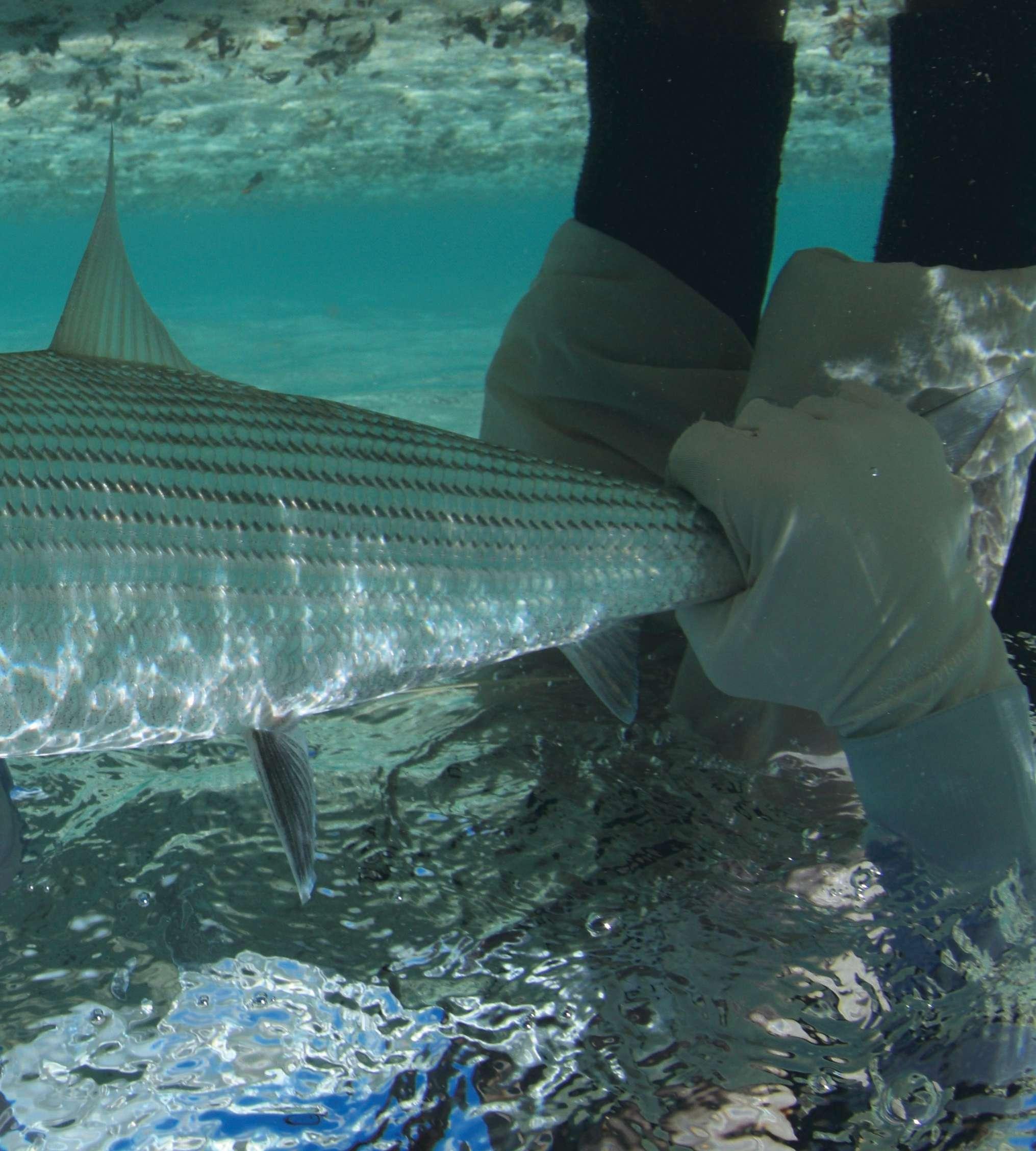




a photo portfolio

Daniel enjoys catching giant tarpon from his float tube in a remote jungle river of Central America.
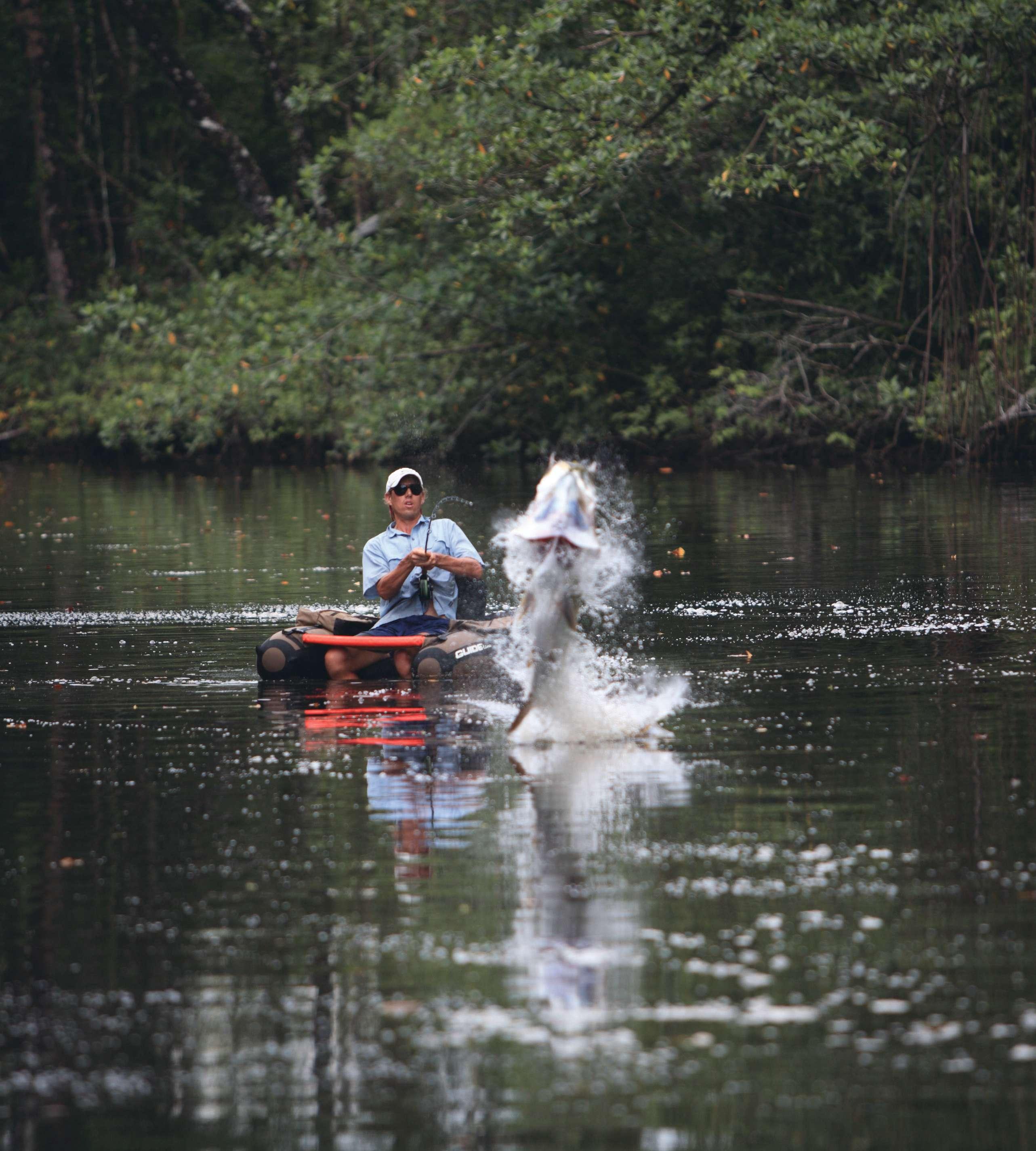
Two yellowfin tuna perform a yin yang swimming pattern in front of Daniel’s camera (Ascension Island).


Flyfisher Daniel Günther carefully releases a huge barracuda that lurks on the flats of St. Joseph Atoll in the Seychelles. Below: Daniel Günther enjoys an early bird cast from his float tube in high hopes of hoooking a giant tarpon.

A wild Atlantic salmon fell for the Frances fly on the waters of the Norwegian Flyfisher’s Club, River Gaula, Norway. Below: Daniel hooks another giant tarpon in a minuscule creek (remote Central America). The fish goes berserk right after hook-up.
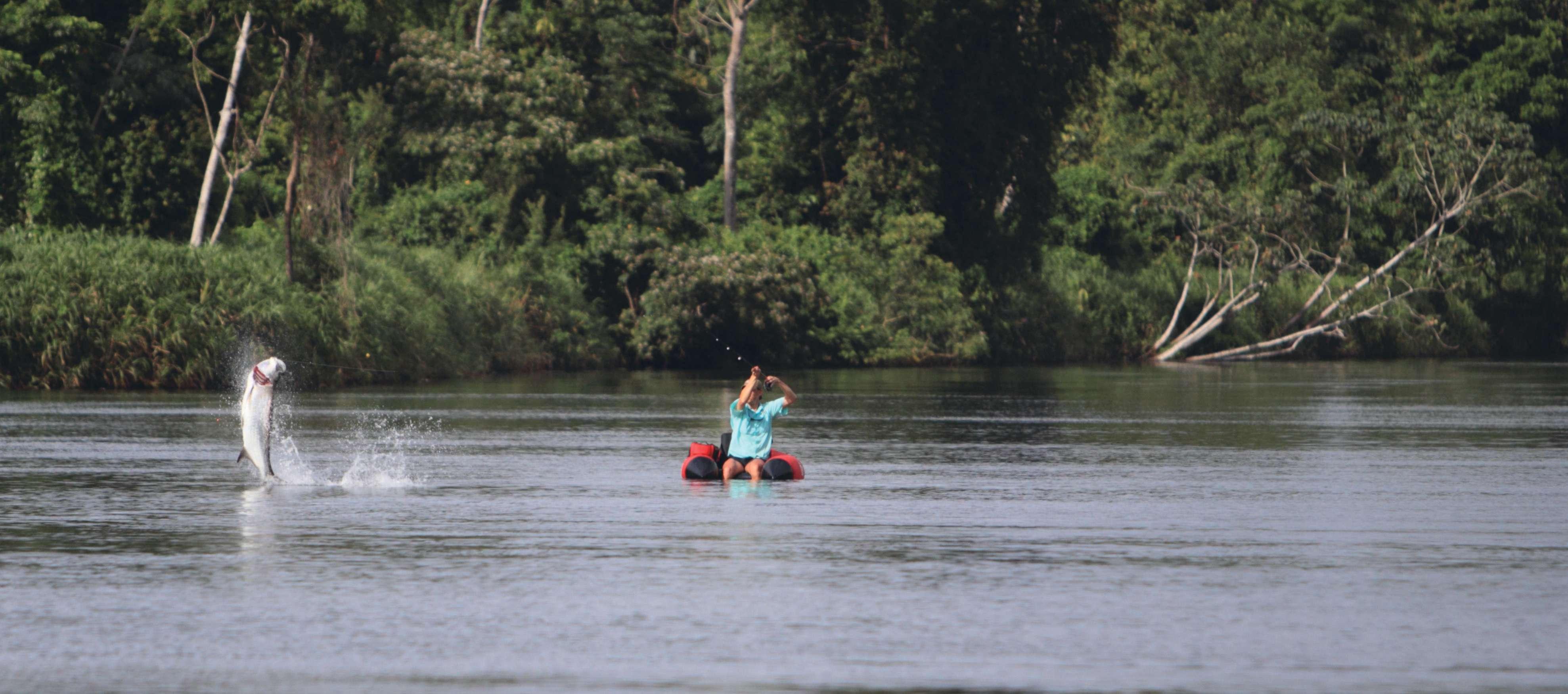

A healthy release of a fly-caught sailfish in the Seychelles (St. Joseph Atoll).
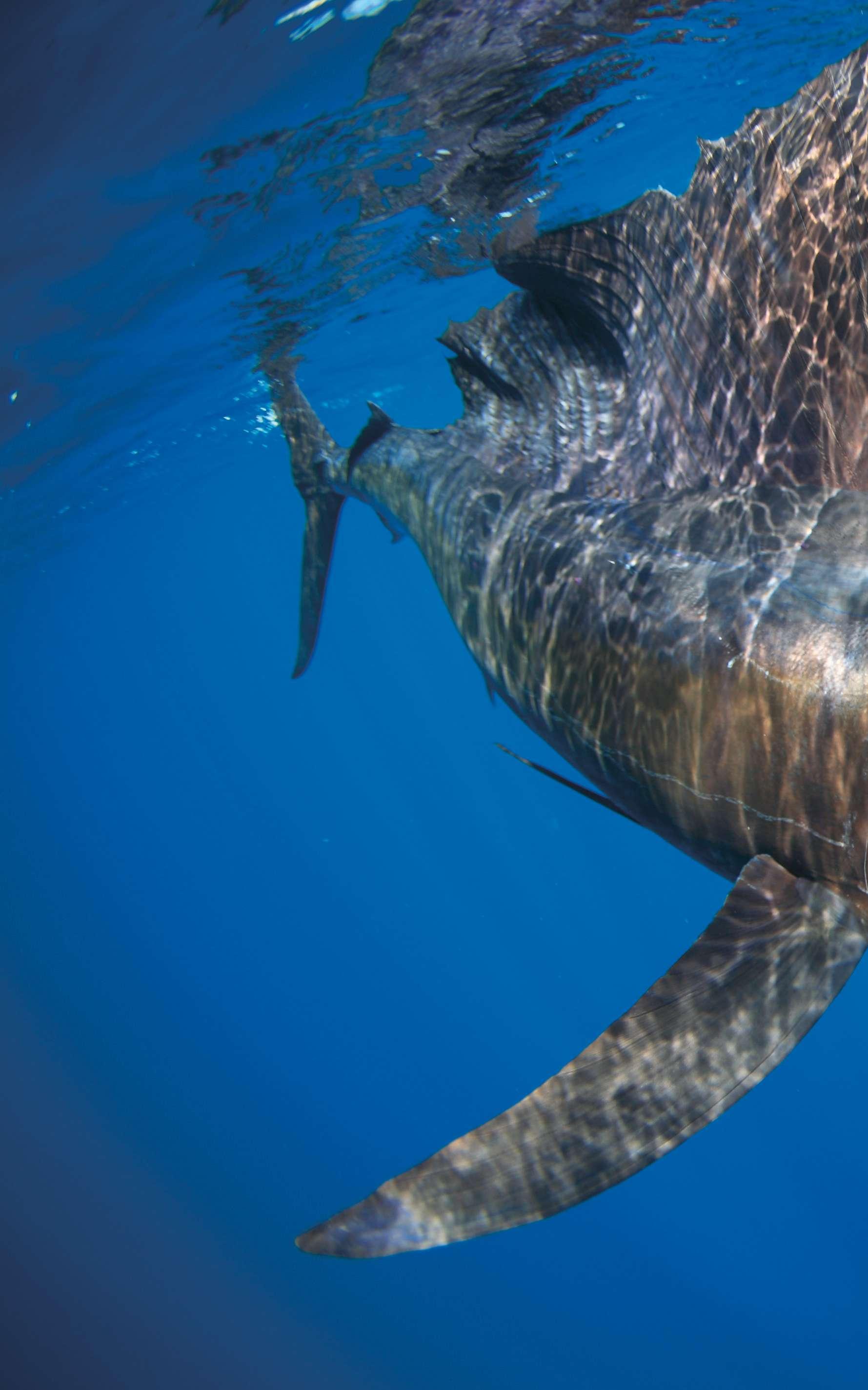

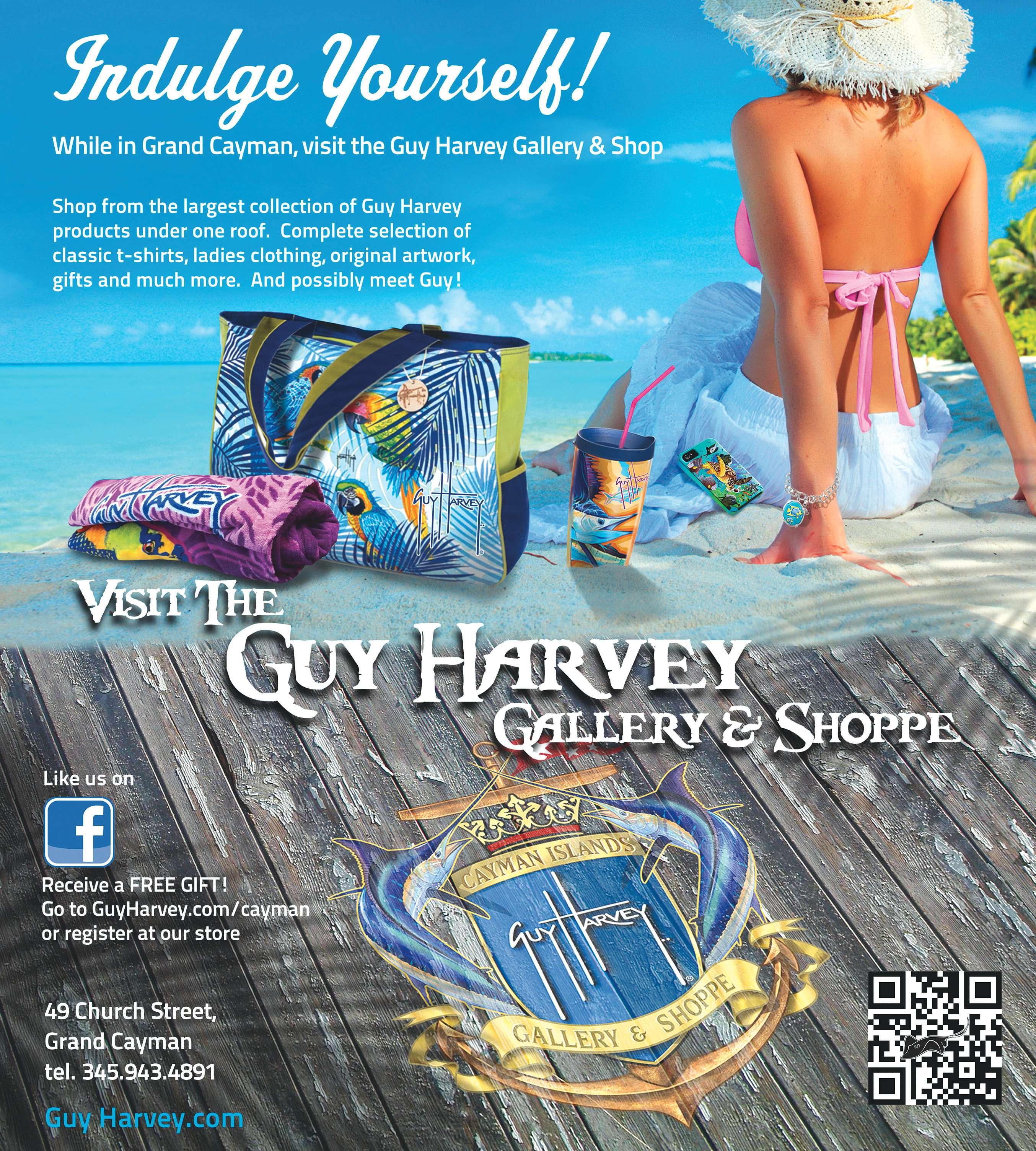

BY EDITOR
NICK HONACHEFSKY

COMING AROUND
Conservation makes progress in Central America
Both recreational and commercial fishing sectors drive monster money into Central American countries. No doubt, monies that sportfishing/tourism and commercial fishing bring into Central American countries determine certain policies and the politics that surround them. Still, fisheries management in the region appears to be about more than just power or profits. A shift in thinking has taken root, where local peoples and governments alike understand their responsibility to protect the fish stocks, which in turn, protects their investments in their own country. Central American countries are improving regulations and enforcement, and they’re doing it through lodge efforts as well as governmental initiatives.
Kristen Salazar, owner of Casa Vieja Lodge in Guatemala, works with The Billfish Foundation (TBF) as well as the Central American Billfish Association (CABA) to tag billfish for a variety of efforts. “Mainly, it’s to educate people that there is no real negative impact of sportfishing, but also to determine the role of oceanic features on billfish seasonal habitat use, the spatial interactions with commercial gear and status of population exploitation of the billfish stocks.”
However, the overarching problem for any conservation measures set forth is that you can enact all the laws you want, but the underlying issue has always been enforcement of the laws, and instilling a driving mechanism to ensure the laws are followed and applied. In 2002, Guatemala created an agency to enforce the laws, namely the Guatemala Sailfish Commission. This includes strong representation from the sportfishing community, especially through member Niels Erichsen, who is also owner of Pacific Fins Resort.
The “four pillars of the commission” are: to enforce the law through inspections at sea and jetty entrances, distribution outlets and markets, with an ultimate goal of snuffing out the supply chain for the sailfish fillet; to promote the development of alternative fishing for artisan anglers; to provide education at the elementary and university school levels; and to promote local and international tourism.
This past June, the ministers added some backbone to the agency when they involved the Coast Guard in enforcement duties. They have had success through sting operations at docks and by intercepting and unloading boats offshore. The shift in tactics has also prompted the military to help by reporting sailfish kills to the local police. It’s a bold move and a step in the right direction for Guatemala.
Likewise, there is progress in Panama. For example, at Tropic Star Lodge in Pinas Bay, Panama, where Guy Harvey has visited more than 50 times, they’ve led by example while also working with the government to implement more conservation policies. The lodge universally adopted circle hooks in the early ‘90s and has been releasing all roosterfish since 2007, and more recently, all Cubera snapper. In 1994, owners Mike and Terri Andrews, along with different leaders in Panama, created the CONAMAR Foundation (Foundation for the Conservancy of the Sea, Nature and Marine Species). CONAMAR was responsible for establishing a 20-mile, non-commercial fishing zone around Pinas Bay and creating a billfish decree that protects all billfish from being killed commercially. In 2010, Panama secured a national decree that banned large-scale purse seines from Panamanian waters. This set the standard for other Central American countries. A previous president, Pedro Perez Balladares, won the IGFA conservation award for the country of Panama.
Carter Andrews of the Isla Secas Lodge promotes conservation efforts that the tuna catches are caught,” he said. Regarding sportfishing measures, Mufson include not only tagging programs of billfish off the Hannibal Banks, but a real adds, “We can use circle hooks only for live and dead baits, and cannot bring emphasis on catch and release of bottomfish species as well. billfish out of the water and into the boat for a photograph.” Zancudo Lodge is
“Isla Secas tags black also working with Gray’s Fish Tagging program and marlin, tuna, roosterfish, Certainly, over the last 15 has tagged 60 fish so far. snapper, and grouper, and An example of the country’s recognition of the records show that in 2013 years, a shift in policy has socioeconomic and natural impacts of overfishing we released 60,000 lbs. of is the formation of the Federacion Costarricense de fish, with only 10,000 lbs. changed in Central American Pesca (FECOP), which touts a strong message. Quoting harvested,” said Andrews. the Federation: “The lack of policies on sustainable
Regarding governmental countries regarding the fisheries in Costa Rica has resulted in the deterioration conservation initiatives in Panama, Andrews is a little protection of their fish stocks. of social, economic and environmental conditions in coastal communities. Over the last 10 years, the more jaded on the prospects. abundance of fish stocks available to the national “They may have banned the four-ton (generally 40 ft.) fishing vessels that had fisheries sector has declined by at least 50%.” 1,000 hooks on the longliners, but now those longliners bought little boats, each According to FECOP, the foreign tuna fleet catches 18 times more tuna carrying 200 hook longlines that hammer away indiscriminately at the snapper than the national fleet, causing serious socioeconomic problems and poverty and grouper spawn on Hannibal Banks rocks. They clean out the bottomfish. among thousands of families along the coast. FECOP, working with the office All the fleet did was downsize their boats and buy more of them, so the law of the president of the Republic, is taking on initiatives to research purse-seine doesn’t work too well on that level.” He also notes that within the prominent fisheries over the period of a six-year moratorium that would allow the parallel Coiba National Park, there are 41 licensed longliners allowed in park waters that development of a fisheries management plan and an on-board observer program frequently push in close to a mile from shore. on the national fleet, including research and development of alternative fishing
On the positive side, the Panama Marine Resource Foundation was formed gear to reduce bycatch. The program “would focus specifically on billfish and to work with governmental and private agencies. They have already begun to maximize tuna catches by the national fisheries sector that would have access to institute educational programs on fisheries conservation tuna, free from competition within the school systems, as well as working with The foreign tuna fleet catches from the international lodges to commit to complete policy on catch and purse-seine fleet, while also release—not just on all billfish, but on roosterfish and 18 times more tuna than the reducing their bycatch of Cubera snapper as well. The biggest obstacle now is the enforcement of the national one, causing serious billfish. Foreign fleets will not be allowed to enter an area laws already in place. This is one of the many challenges socioeconomic problems and within a 370-nautical-mile that the new president, Perez Balladares, is facing while limit, which is for the exclusive continuing to improve the conservation efforts and poverty among thousands of use of national fishers.” enforcement in the Republic of Panama. Certainly, over the last
In Costa Rica, conservation efforts have really families along the coast. 15 years, a shift in policy become part of the fabric of national life. According to has changed in Central Gregg Mufson, owner of the Zancudo Lodge, Golfito, Costa Rica, seems to be American countries regarding the protection of their fish stocks. Though some getting ahead of the curve. fisheries, such as sharks, are still experiencing a severe decline, an awareness
“So far, some conservation efforts that have been passed in Costa Rica are to make a preemptive stand and protect both bottomfish and billfish is highly that no shrimp boats are allowed to trawl in Golfito Bay area; no export of billfish commendable—so long as mechanisms are set in place to ensure compliance and is allowed out of the country; longliners may not use live baits within 40 miles enforcement. Only time will tell if Central American fisheries management will be of the shoreline; and tuna seiners are banned within 40 miles, where 80% of a model to follow or a lesson to from which to learn.
with the Guatemalan Tourism Institute. The Commission was created not just to address conservation from the perspective of enforcing regulations, but by also increasing scientific investigation, raising public awareness of the importance of billfish, developing new conservation programs, coordinating local and international authorities in enforcing the law, and promoting sustainable fishing in alignment with tourism.
CA: What is the economic impact of
recreational or tourist fishing compared to commercial fishing?
MM: Sportfishing for sailfish in Guatemala generates $5,000 dollars per animal caught, while illegal fishing of this species generates only $15 dollars per animal captured.
CA: To what degree does illegal fishing have
an impact on the fishery?
MM: Our challenge is with local fishing and especially with demand for dried, salted fish during the season of Lent.
CA: Is there illegal fishing from foreign
commercial boats?
MM: No. We’re not seeing fishing pressure of this sort because these boats focus on fishing reefs and on tuna. Since our coastline doesn’t support either one, we have avoided this problem.
CA: In what ways does Guatemala work
with its neighboring countries or the larger international community on conservation issues?
MM: Guatemala encourages conservation of sailfish throughout the region through our affiliation with the Central American Fisheries and Aquaculture Organization (Organización del Sector Pesquero y Acuícola del Istmo Centroamericano, OSPESCA). It promotes the development and the coordinated management of regional fisheries and aquaculture activities in Central America. Guatemala’s Sailfish Commission meets regularly and pools together resources from across the government and the sport fishing community to ensure conservation initiatives are producing real results.

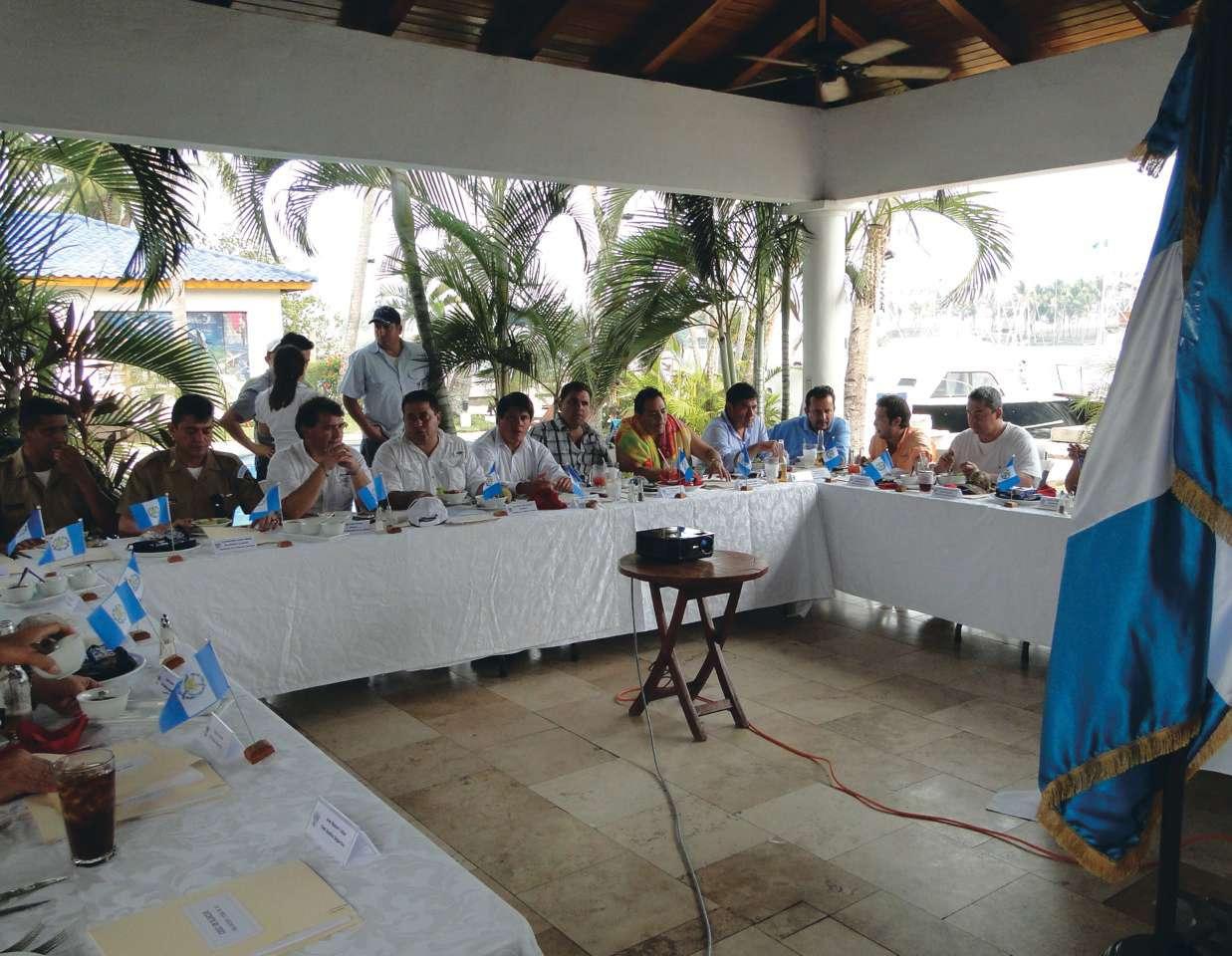
CA: What are some of the immediate, practical
challenges facing Guatemala’s efforts?
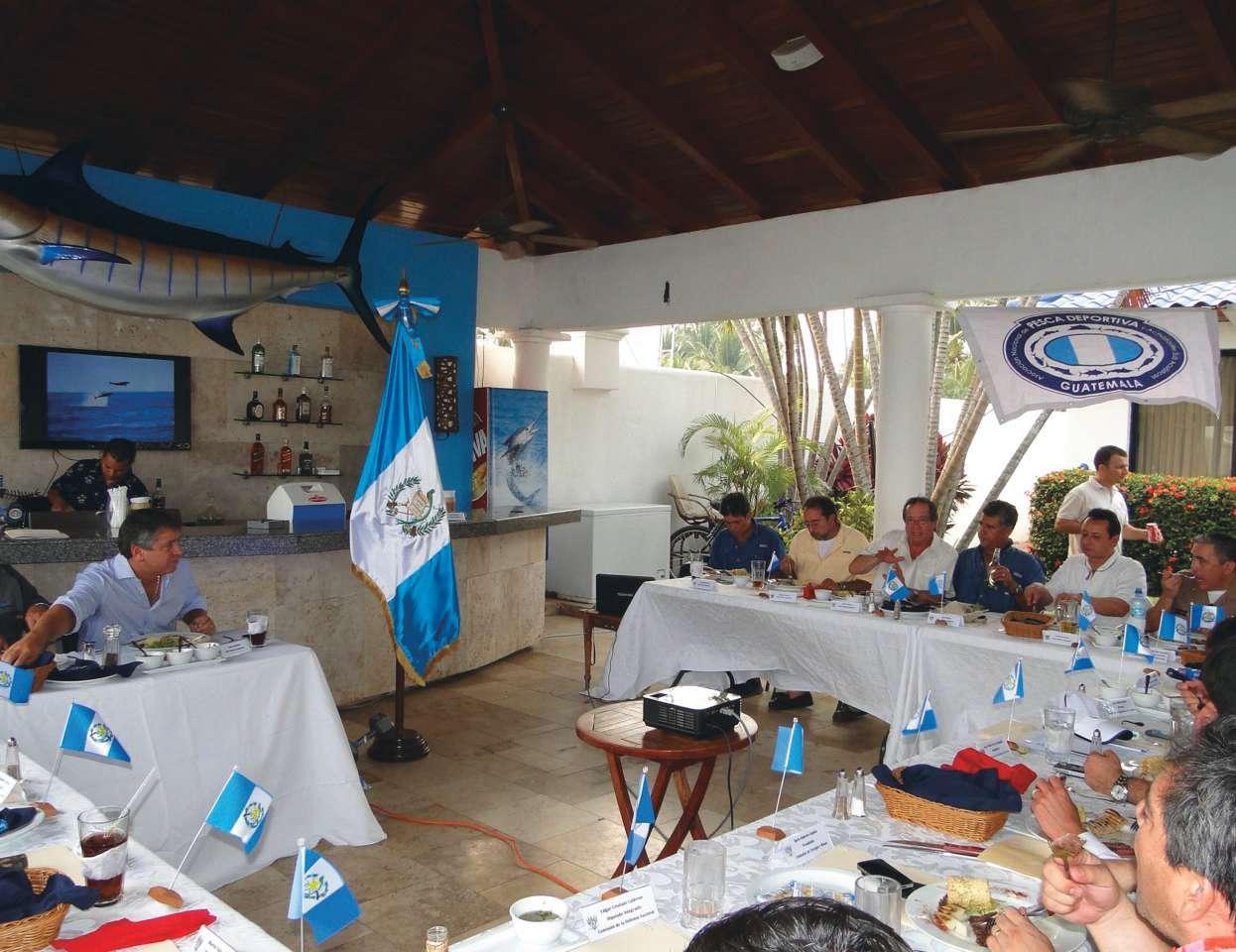
MM: We need to develop and promote new techniques and opportunities for artisanal fisheries so they no longer use the sailfish as a source of income. We also need to create a fund to sustain these initiatives.
Gear You Gear You Didn’t Know Didn’t Know You Need You Need
G E A R H E A D S: If you haven’t noticed yet, the Guy Harvey Magazine staff has a penchant for things
BY GHM STAFF that are a little, well...different. Okay, sometimes the stuff we write about is just downright geeky. But that’s okay, because we do work for one of those artistic types. When it comes to new products, this means that, while we love to cover exciting things from the big players in the marine industry, we also appreciate innovative gear that may not be considered mainstream. Maybe it’s from a smaller manufacturer, or it’s an eco-friendly alternative or it’s just plain cool. And, if you didn’t read about it here, you might never see it anywhere else. Fair enough? Here are a few new products for 2015 we think should be on your radar.
Keep Your Line Fine

Plenty of fishermen have a love-hate relationship with their spinning reels. They love the ease of casting and having a smooth drag, but they hate dealing with line twist. Nothing’s more frustrating than trying to place a bait in front of a tailing redfish only to have your line hang up in mid cast and fall pitifully short. To cure this plague, Wavespin Reels use a slick, new spool design that automatically handles line loops and twists when casting. The result is no more tangles, and casting distances up to 30% longer than traditional reels.
While Wavespin has had a greater presence in the freshwater market, the latest model has been built specifically for saltwater use. A prototype of the new Vison65 was even given to several IGFA anglers, including Jason Schall, who gladly used it, abused it and gave input on needed improvements. The end result is a 65-size reel with enough line capacity (460 yds. of 12-lbs. mono or 50-lbs. braid) to work well as a surf and wadefishing reel as well as a great reel, for tarpon, big reds and all other species of the larger game fish found in saltwater. This new reel is perfect on a boat rod and fills multiple applications, while tipping the scales at just 19 ounces.
MSRP $169.95 www.wavespinreel.com

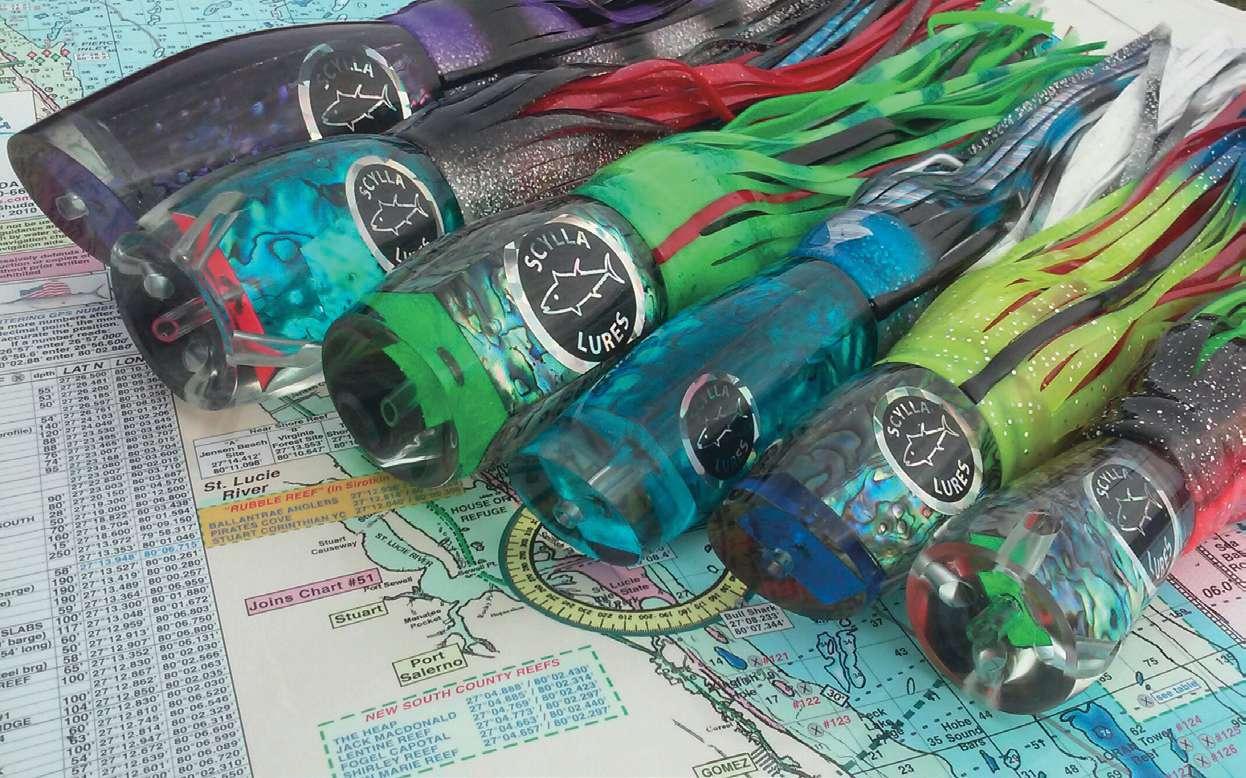
Fishing Bling
Dan Phillips is a man who takes serious pride in his work, and his work is handcrafting top-shelf lures. Available rigged or plain, Scylla lures come in light-, medium- and heavy-tackle sizes for targeting everything from mahi and kingfish to the biggest tuna and marlin. Anglers can choose from a variety of head styles, each designed to troll perfectly and create just the right action needed to induce reel-screaming strikes. Heads are made from water-clear polyurethane and will not chip or fade. They are matched with high-quality Ocean Lure Concept skirts, and there are enough colors, patterns, and sparkles involved to impress both veteran charter captains and 8-year-old girls who might want to use them as fashion fashion accessories. accessories. Lu Lures are made ini small ll batches to maintain theth highi hest t standards standards and and custome customers can order directly from the company’s website. When you you order order it, it, they’ll they’ll ma make it.
MSRP MSRP $24.99–39.9 $24.99–39.99 www.scyllalures.c www.scyllalures.com
Sonar On a String
Although this looks like something you would expect to see in one of those gadget-filled catalogs you find in airline seatbacks, we think the iBobber may have some potential for the shallow water angler. It’s a float that you can tie to a line and cast into position—useful for kayak fishing or pier fishing. Once in the water it activates, using Bluetooth to connect with a Smartphone, tablet or watch up to 100 ft. away. Activate the iBobber app and you can plug into all kinds of fishy functions. First, it’s a simple sonar that will tell you depth of the water from 3 to 135 ft. It will also identify fish, tell you their depth, and tell you if the fish is under or over 15 inches in length. Anglers can record locations using a GPS function, and record water temp and weath ther conditionditi s, and keepk it it all ll ini theth app’s’ lol gbook k. There’s even a mapping function. Cast the iBobber out, reel it back and it will record the bottom contour, revealing any structure or “hidey holes” where the fish might be—a slick tool for prospecting new territory.
MSRP $99.99 www.reelsonar.com

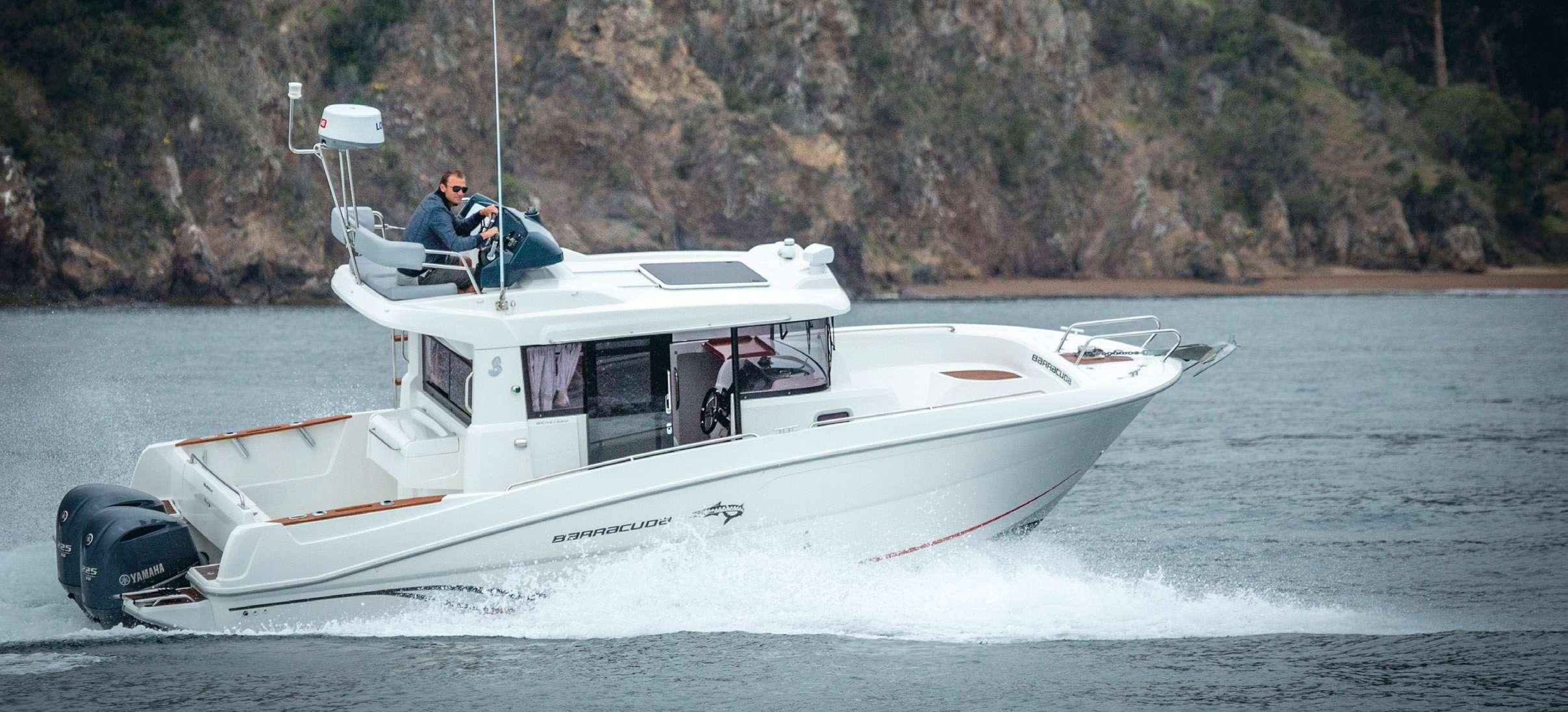
Beneteau’s Surprise
Sailors know Beneteau. It’s a 100-plus-year-old, legendary French company with roots in wind-powered crafts and motor yachts. In June 2014, the company deepened its footprint in the powerboat world when they purchased Rec Boat Holdings, owners of Four Winns, Glastron, Wellcraft and Scarab. That made many headlines in the boating universe; but perhaps the most intriguing new boat in the bunch is part of the old guard—the new Beneteau Barracuda. It comes in 24 or 27 ft. and has everything, including the kitchen sink.
Leave it to the French to come up with something completely different. This boat has a spacious cabin, a roomy galley, v-berth sleeping for four and twin steering stations with one perched on a fly bridge. The hull is sleek and attractive. There is a stern fishing deck, but it’s a bit cramped—a sacrifice to keep the interior cabin more wife-friendly.
The hardcore fisherman may turn up his nose and wander toward the Intrepid and Contender center consoles, but for weekend family fishing trips, the Barracuda offers everything in one floating box. And it gets a 10 for sheer uniqueness.
MSRP approximately $150k www.beneteauamerica.com
Mix Your Fish a Drink
You can find the fish, or you can make the fish come to you. The best option is probably to do both. Many anglers know the value of using chum to do the latter and attract their target species. The problem is that chum smells like, well, chum. And you usually have to prep it, cut it, freeze it, thaw it...it can be a royal mess. To eliminate these hassles, M-80 Marine Products has developed M-80 Supercharged Chum. Available in both saltwater and freshwater blends, it’s a dry powder that bypasses the smell and mess of traditional chum, yet, in the water, it creates a truly potent cocktail. The powder comes in a resealable bag or bucket and very little is required to be effective. It can be sprinkled on the surface or mixed with a small amount of water and formed into a ball to be dropped to the bottom. The chum attracts fish by sight, scent, and taste, and is made with “flavor enhancers” to concentrate fish and trigger a feeding frenzy. It’s a great way to attract the big one to the back of the boat or to gather baitfish for catching with a castnet.
MSRP $18.95 (2.5 lbs. bag) www.m80marineproducts.com
Green, Clean and Mean
What do you use to clean your boat? That was the question the owner of Bio Green Clean was asking herself as she cruised by dock after dock and watched soapsuds spilling into the waterway. She was already selling her 100% plant-derived cleaner for household use, so she started marketing it to the marine industry. First and foremost, the product cleans. (Just Google the video by Ed Schultz of Ed TV as he cleans his airplane.) But the best news is that Bio Green Clean makes things shine without harming the environment and without chemicals, dyes, perfumes or artificial ingredients. There’s no peroxide, bleach or ammonia, and it’s hypoallergenic. It might even go well with rum—but that’s not highly recommended. The company proudly claims that Bio Green Clean is


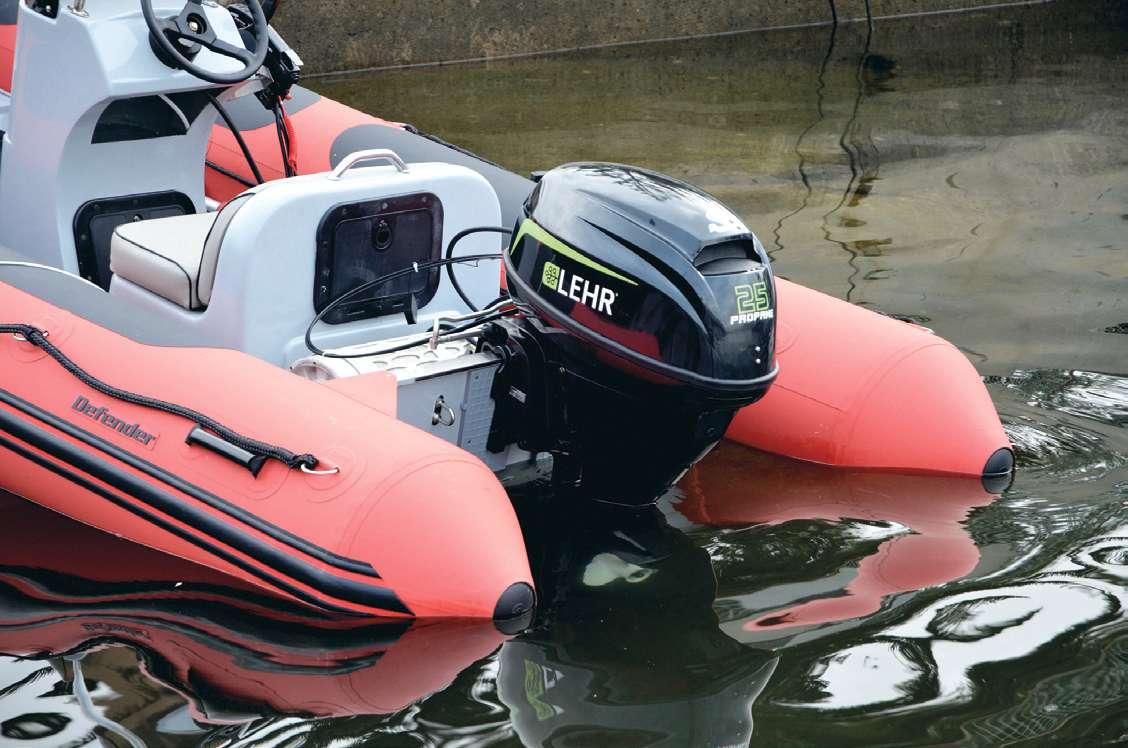
the most effective, yet safest, all-natural cleaning product ever produced. That’s bold, but it seems to be true. When you clean your boat, you might as well use a product that won’t harm the waterway.
MSRP $36.95 (1 qt. Concentrate) www.biogreenclean.com
Is This Really Necessary?
It’s true that many parents shower their kids with too many toys and, in this case, an innovative mom wanted her young waterbugs to have a diving board on their small boat. It just wasn’t enough to leap into the water from the side of the boat. They needed springing power for flips, soaring swan dives and the occasional belly flop.
Enter the Lillipad, the world’s only diving board for boats, which begs the question: is this really necessary? It does seem a bit excessive, but credit has to be given to the sleek, innovative and award-winning design that absorbs the downward force from the diver and doesn’t rock the boat. Because everyone knows that rocking the boat is a highly overused expression.
If you’ve run out of toys for your boys and/or girls, the Lillipad looks like it’s a fun, cool and unique investment for your boat.
MSRP $1,295.00 www.lillipaddivingboards.com
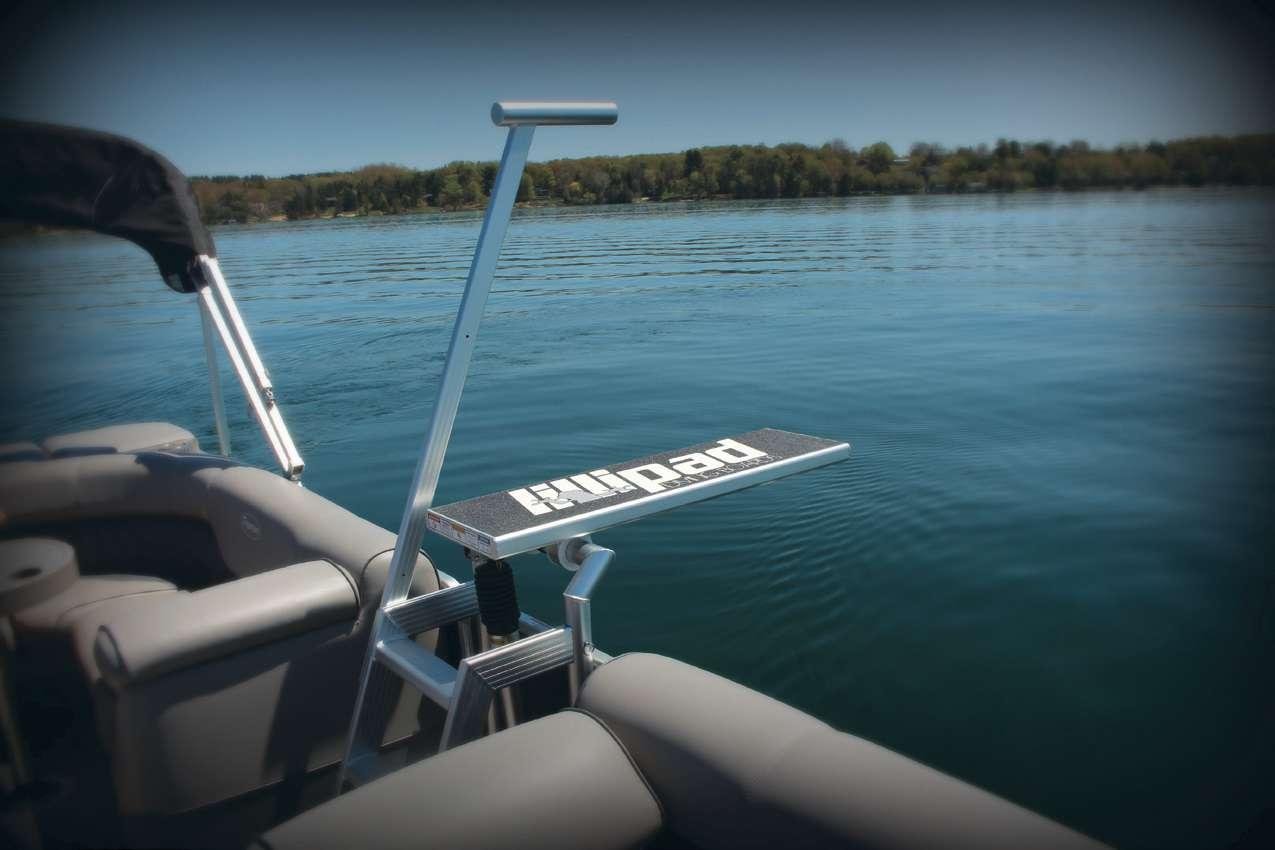

Propane Power Goes Bigger
The LEHR propane outboard motors have won tons of eco awards for their clean burning fuel over the past few years. Now, the company has pumped up the volume with a 25hp engine, opening the door for Jon boats and larger skiffs than the 15hp can handle. While this is big news, the coolest breakthrough is not the fuel but the innovative, internal lithium ion battery. Instead of a heavy, bulky, 12volt lead acid battery (so Neanderthal!), the LEHR has a lightweight (under 2 lbs.) battery hidden under the cowling to electric start the engine. Better yet, lithium ion will hold a charge for a year and its life expectancy is twice that of a lead battery. LEHR is the only motor on the market to offer this function. The battery innovation is also available on the 9.9hp and 15hp outboards. This type of high technology comes with a high price.
MSRP $4,295.00 (25hp with battery) www.golehr.com
Water, Water Everywhere
Folks know Hooker Electric for their mac-daddy electric fishing reels. Well, the company has just introduced a new pump based on their already-proven electric motor technology. It measures 4x4x6 in. and delivers 4500 GPH at 6 ft. of head pressure to run large live bait wells. It’s completely submersible and water-cooled, and no water box is needed. It’s also variable flow, controlled either by a turn pot like the ones used on Hooker’s electric reels or using a push-button switch. The turn pot gives unlimited variation as it adjusts motor speed as you turn the dial. The pushbutton switch changes between three different speed settings (low, mid and high).
The pump is built to last, with a shaft made of titanium, an internal body of 6061 aluminum and a solid PVC housing—all designed with electrolysis in mind. The pump runs on 12v DC and draws a maximum of 22 amps. There’s a 2" npt inlet and a 1½" npt outlet. If needed, Hooker offers a manifold that will distribute water to multiple areas. MSRP $749 www.hookerelectric.com


upwelling of b m ke Gu tem ’s co s ce for big P cific s
BY OZZY DELGADO
If Guatemala is on your fishing radar, you know it is nestled into the narrow strip of land connecting the two American continents. Bordering Mexico and Belize to the north, and Honduras and El Salvador to the south, it boasts beaches on both the Pacific and Caribbean coasts. It also has a reputation as home to perhaps the greatest Pacific sailfishing grounds on the planet.
I’ve always been curious about Guatemala’s fishing scene, and when a recent invitation presented itself, I booked a trip to find out for myself if the hype was real. This is an increasingly popular destination for U.S. anglers and I wanted to get a feel for everything from the accommodations to the government’s billfish management work to the vibe of the local fishing community. Fortunately, I speak Spanish, and I was hoping to get the “untranslated” version of what’s happening with the fishery.
The interminable astonishment of La Antigua, Guatemala—La Iglesia de San Pedro Apóstol (Church of Saint Peter the Apostle).
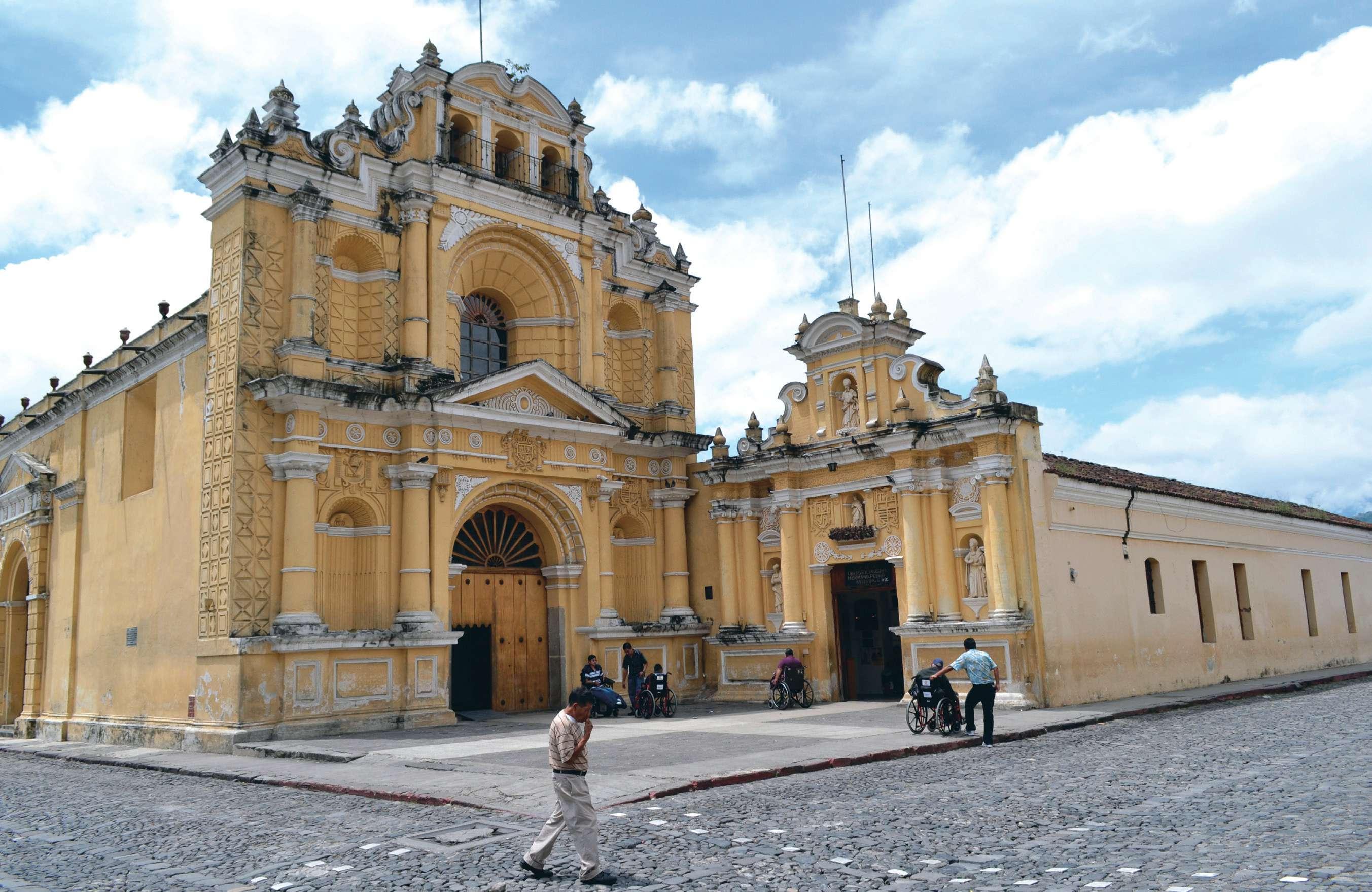
Flying into Guatemala City, the nation’s namesake capital, I was greeted by my guide, Norman Raxon. We exchanged pleasantries and quickly developed a good camaraderie. Raxon was easy-going and obviously adept at making newcomers feel at home. After just a short time with him, I realized that at least some of my trip would feel more like a wine tasting than investigative journalism. That’s not to say there aren’t real issues to understand—such as how serious and effective the government government is is about about its its fishing fishing policies policies—but but if if the the fishing fishing was was as as good good as as I had had heard, I might be swirling and sniffing the glass and deciding in what subtle ways it was different than something equally grand, like chasing exotic fish with a fly rod in the Amazon.
First on the agenda was a quick driving tour through the city, and it gave me a first visual experience of the country. I was struck by the contrasts. There were both modern buildings and old ruins, and a collection of ancient Mayan sculptures and other artifacts. Later in the week, I would see more of this diversity in the landscape. Vivid colors, lush vegetation, volcanoes rising into the sky, and a mix of Mayan and colonial influences in the architecture all gave me a sense of the cultural and ecological richness of Guatemala.
In many ways, these views fit the postcard-perfect images travelers see in tourism department ads, but it struck me that it’s not what I expected. Subconsciously, I had a dimmer view of the country taken from the daily news cycle. But, like nearly every destination, the reality is more complex than either postcards or newscasts like to make it. Still, I found that the Guatemala you see from the inside, once you walk the streets and meet the people, is a very hospitable place. The way I was received everywhere—even by total strangers, not part of the tourist trade—was refreshingly, overwhelmingly friendly.
After the tour, my schedule called for a power lunch—a meeting with the Guatemala Sailfish Commission. I was glad, too, because I hoped it would answer some some of of the the basic basic questions questions about about the the fishery. fishery. Present Present were were both both top top Guatemalan Guatemalan officials and leaders from the sportfishing community. The key element of the Guatemala Sailfish Commission consists of Niels Erichsen, owner of Pacific Fins, Brenda Zaldana, marketing director for Guatemala’s tourism department (INGUAT), and representatives from the Department of Agriculture, Fisheries and Food, Department of Defense, Department of Natural Resources, Department of the Interior and Department of Social Services.
Through our discussions, I found out that Guatemala has been working for more than a decade to promote its sailfish fishery. In 2002, the country made headlines for enacting into law the protection of the sailfish, and the Commission has developed numerous programs to support this goal. They have worked to raise public awareness of the importance of billfish, increase scientific research on the species and the fishery, and to combat illegal fishing—a huge task throughout the region.
At the meeting, I also connected with Julio Mansylla, a legend in the local
fishing community and a key member of the Commission. I immediately recognized him as an old salt, and he helps to bring a very real world, fisherman’s view to the government’s work.
“Do you mind if I go out one of the fishing days with you to talk more about our plans about the fishery?” he asked.
I readily accepted. I really wanted to get some first-hand experience on the water with the local fishing experts. And I had a hunch that Julio’s presence would be a great bonus come fishing time. I have a policy never to turn down local knowledge when I can get it.
I spent the night in nearby Antigua, a city many consider the most beautiful in Central America. It is filled with colonial-era mansions with brass knockers and elaborate cedar wood window grilles, carved hundreds of years ago. The Hotel Camino Real—one of many boutique hotels throughout the city—turned out to be a smart choice for unwinding after a long day of travel.
Up early the next morning, it was time to head down to the coast and Puerto San Jose, home to the legendary Casa Vieja Lodge. Located less than a mile from the marina, the resort has a new lodge, extremely comfortable accommodations and some of the best sport fishing boats in the country, each manned by proven blue water captains.
After a quick breakfast, I took a short ride to Marina Pez Vela. Waiting for me was a 31-ft. Bertram by the name of Piragua. It’s a boat well known in the tournament circuit, and I’d started thinking about catching my first Pacific sail. The high season for sailfishing is November through the latter part of May. But even though it was late September, I knew that Guatemala could put up a historic day of fishing anytime of the year. We cruised out of the harbor for the 30mile ride out, and I was able to sit and soak in the view off the back of the boat—a sheer volcano rising up off the coast. Fishing would mean finding where the bait was concentrated—and some days that can be as close as 15 miles—but our captain was up-to-date on the reports coming in from the charter fleet and we would have to make a farther run. As we headed out, things got bumpy. The waters in this area are typically calm, but Mother Nature saw fit to throw some 4–6-footers our way. Still, I was feeling confident and declared it to be “marlin weather.” I got some skeptical looks and a friendly chuckle from the crew. In Guatemala, dead ballyhoo is the bait of choice for sails, with one teaser in each side of the boat and a rigged mackerel in case “the man in the blue suit” shows up. I was glad to see circle hooks on the rigs and learned that the local fleet advocates their use.
After an hour’s ride out, we put the lines in the water and started to work. “Marlin, marlin!” yelled the captain. I quickly opened the bait cooler and grabbed the mackerel. I positioned the bait just in front of its bill and let him eat. This is a time when everything must go right, because there is no guarantee a marlin will stick around if it gets spooked. With my thumb holding the line in free spool, I made sure he ate the bait. As I felt my thumb start to burn, I positioned the reel lever on strike.
Bam! He was hooked. But he decided to hang close to the boat, and I made fast time in pulling him close to the transom to get a clean release. As the mate grabbed the leader, the fish just went bonkers and put on a show for us to see. The estimated 350-lb. blue marlin gave me a nice fight for over 30 minutes until we
Mahi on board means fresh ceviche and homemade tacos.

A Pacific sail puts on a brilliant show. Photo: Casa Vieja Lodge.
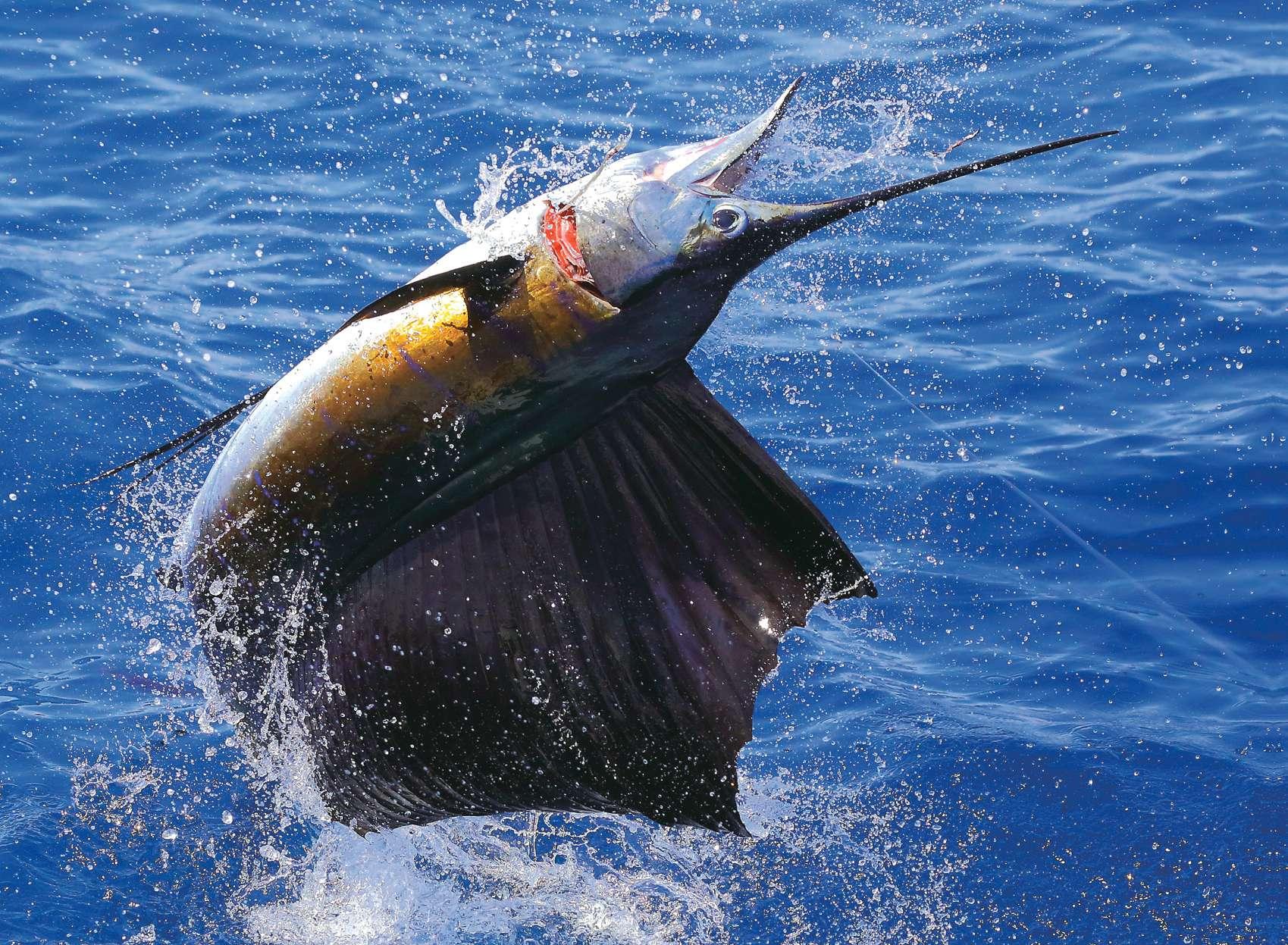
got it close to the boat again. This time, it broke off as the deckhand grabbed the leader—one more marlin for my résumé.
After our action-packed marlin show, we regrouped and started trolling again. This time, I had a chance for a little breather and sat down to talk with Julio. I couldn’t help but notice the passion he has, both for the sport and for his country’s fishery. One of his ambitions is to create a no-take billfish zone, 50 miles by 100 miles off the coast of Guatemala.
The conversation was cut short, however. Not long after we started to troll, we had our first sailfish on the teaser, and another angler on our boat soon had his first-ever Pacific sail on the line. There is no denying that the Pacific sailfish is much larger than its Atlantic cousin. Beautiful colors shot across its body as it put on an aerial display.
The fishery is certainly unique in this area. Researchers have conducted studies on the billfish off the coast of Guatemala and concluded it might be the largest known feeding grounds for Pacific sailfish. Strong currents coming west to east from the Mexican coast turn back after hitting the coast of El Salvador and create an enormous, naturally occurring eddy around the San Jose trench, also known as “The Pocket,” which pushes up bait that pelagic predators just can’t resist.
After a bumpy, but otherwise great day of fishing, I was looking forward to a nice dinner. I was able to meet up with Kristen and David Salazar, owners of Casa Vieja, and Niels Erichsen, owner of Pacific Fins, host of the night’s gathering. It was obvious they were all interested in showing off their slice of paradise and their properties, but it was also pretty clear they have a vested interest in the fishery and actively promote conservation issues, both with the government and with their guests. It’s always good to see business interests cooperating for the greater good of the sport.
On my second day, I arrived at the marina to be welcomed by a 32-ft. Blackfin, Maverick—one of several boats run by Pacific Fins. The seas had not improved from the first day, but we arrived at the fishing grounds and it looked like we were the only boat around. I still hadn’t caught my first Pacific sailfish, and so that was high on my agenda. We began our troll and not long after, the captain yelled, “Marlin on the teaser.” The first excitement had come early, but unfortunately, this marlin didn’t stick around too long.
Before I knew it, one of the rods started to scream again and it was a dorado. Like the day before, this tasty fish filled the void in-between the billfish action. Fresh mahi on board called for Maverick’s deckhand to serve us some fresh, homemade tacos with a side order of chips and guacamole and a jumbo shrimp cocktail. Not a bad way to pass the time.
With a bit of green water in our area, the captain decided to run a little further offshore in hopes of finding better conditions. After we found cleaner water, it didn’t take long for the action to start up again. “Sailfish on the starboard rod!” shouted the captain. Those were the words I’d been waiting to hear.
Instantly, I was hooked up. It was an incredible sight to see a massive sailfish greyhound in the distance. By the time the fish reached the transom, I was pumped up and let out an emphatic “Yes!” to punctuate my small victory.
The crew all had their game faces on and we put out the ballyhoo spread. The captain kept circling the area for more bites. “Marlin on the teaser!” he yelled again. The mate grabbed a mackerel, but I saw two blues, one in the starboard teaser and one on the port.

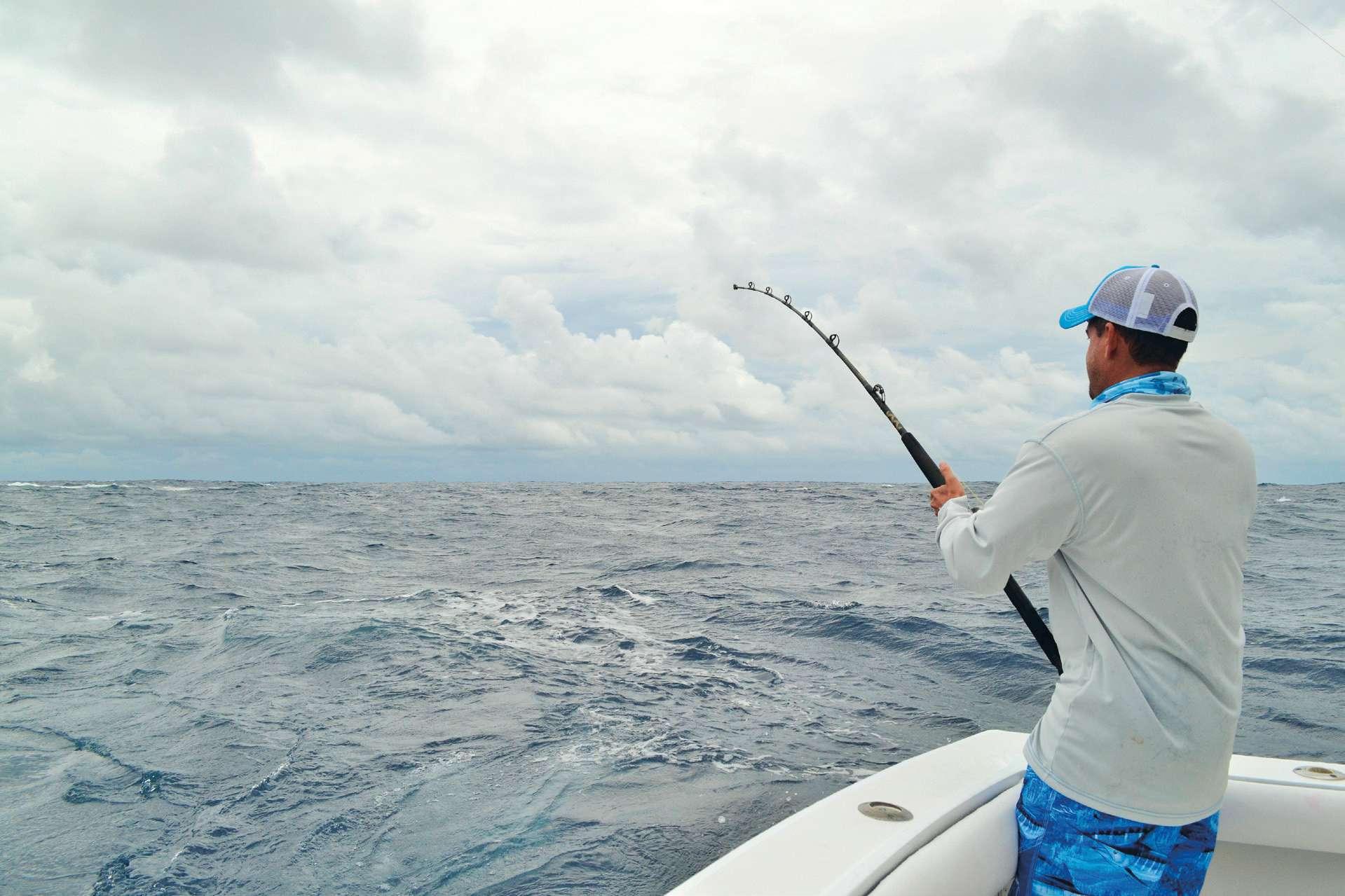
It was coordinated chaos, but as soon as the mate pitched to one of them, Bam! Fish on!
As one of the other anglers started to reel in the line, it went slack, but the second marlin suddenly grabbed the bait and made a run. And it wasn’t long until we had another blue at the boat. Despite the rough weather, in two days, our boats were four for nine on sails, had raised five marlin, released two, and caught plenty of dorado ranging from 15-20 lbs. Not bad, considering this is considered Guatemala’s “slow” season.
It was time to leave the coast and I rounded off the trip with a stay at Hotel Mansión de la Luz back in Antigua. Like all the boutique hotels in town, it was in walking distance to local shopping and attractions and I was able to pick up a few souvenirs. Mansión de la Luz is beautiful, and the owner provided great personal service. It has an open courtyard to enjoy the cool weather and a nice view of the volcano, Volcan de Agua. My host was even gracious enough to cook up some of my fresh catch.
Having seen it for myself, I can say Guatemala’s incredible fishery is for real. It’s evident that the government realizes the great resource they have, and that catch and release fishing and the tourism it provides is a real boost to their economy. There is always more work to do and good intentions do not always become good policy. It will be interesting to see if Julio’s idea of a no-take zone will become reality. But, as it stands, the authorities, resort owners and fishing captains are all finding common ground and making progress in their conservation efforts. If this continues, Guatemala’s reputation as the go-to destination for Pacific sailfish should be safe for a long time to come.
Special thanks to Brenda Zaldana, Kristen Salazar, David Salazar, Niels Erichsen and Norman Raxon. Top: Ozzy, bringin’ them in. Bottom: The Pacific Fins charter fleet offers numerous boats, all with experienced crews. Opposite: Delgado’s first Pacific sail, ready to be released.

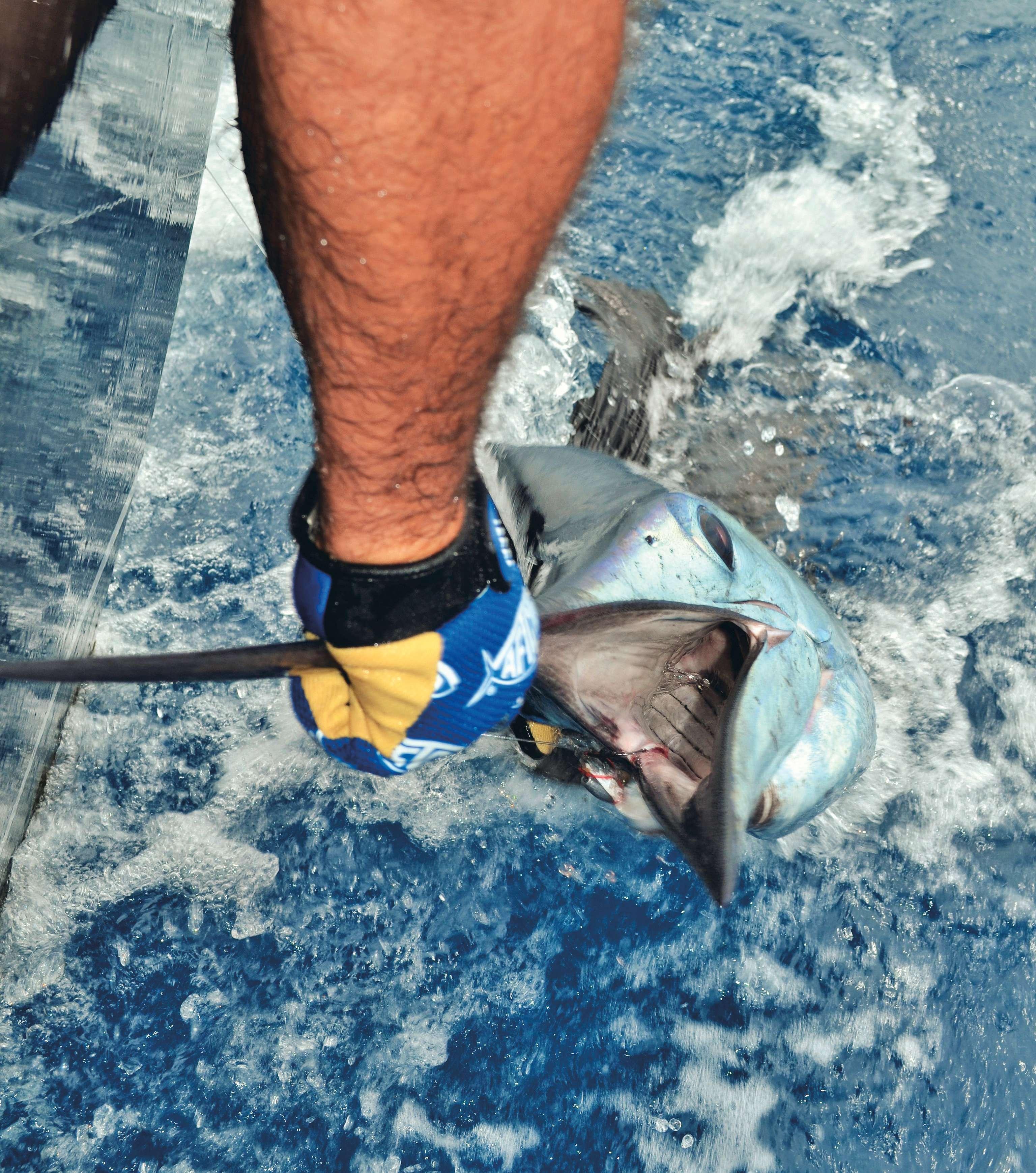
EXTREME EATS
BY GHM STAFF
What makes food extreme? Is it using exotic ingredients? Or cooking under outrageous conditions? Chef Terry French is accomplished at both. A selfstyled culinary bad boy, he has blazed a unique trail to being a celebrity chef. Before graduating from Scottsdale Culinary Institute, he served two world tours in the U.S. Navy, spent nine years as a tournament fisherman, nine years as first mate on a sportfishing boat, and earned his captain’s license to boot.
As a chef, it’s cooking outdoors and in adverse conditions that really gets the creative juices flowing for French. His years spent outdoors, which began even as a child hunting and fishing with his dad, have forged tough mental attitude and innate resourcefulness. As long as he has fuel, materials and fresh ingredients, he says he is happy to cook anything, anywhere, anytime. That claim was put to the test in 2012 when he entered and won the Food Network’s Extreme Chef competition. In the final episode, French found himself atop an elephant navigating the remote jungles in Thailand, then racing up hundreds of stairs to a Buddhist temple. He wowed the judges with his “perfect bite,” and earned the title, World Extreme Chef.
Today, Terry splits his time between the road participating in special events and cooking at Tavolino Della Notte in Coral Springs, Florida. But regardless of his locale, he seems to be always on the move, looking for another event, adventure or culinary challenge. Through the years, he has prepared meals in the most unlikely places and using whatever methods were available.
“I’ve cooked fish on hot rocks over bamboo and over coconuts. I’ve smoked fish in palm leaves and even steamed it in bags by the heat of the sun. Every situation is different, but even if you can’t find a heat source to cook with, “there’s always sashimi,” he says with a grin. “That works, too!”
Having a background as a fishing pro has also influenced French’s approach in the kitchen. Practically, he says being a captain and being a chef carry a similar responsibility, as you’re always looking out for the welfare of your team and you’re always trying to prepare for the unexpected. But he also carries a deeper appreciation for the seafood he prepares.
“I have a real respect for the environment and the sustainable development of our oceans and waterways,” says French. “The fish that I catch are treated with respect and reverence. I’m taking a life that is meaningful and beautiful and I handle it that way from start to finish.”
Of course, it’s obvious that when French speaks of “respect,” part of what he means is creating incredible flavors worthy of the fish that’s been caught. When asked what he likes to eat after a long day on the water, the answer comes easily.
“There are a couple definites on my list. I’m after French onion soup to restore my electrolytes. And I like to pair that with a great piece of fish simmered in coconut milk curry and fresh hot chili’s with lime. Of course, a tall glass of rum over ice is also a must—simple, plain and comforting.”
These days, Chef French is spending a little less time fishing and little more time cheffing. When he’s not globe trotting as an ambassador for brands such as Gunter Whilhelm and Chef Works, he’s participating in special events or working with his nonprofit organization, Chefs for Life. But the wilds are always calling, and remain his inspiration for creating extreme eats.

Chef Terry French | World Extreme Chef

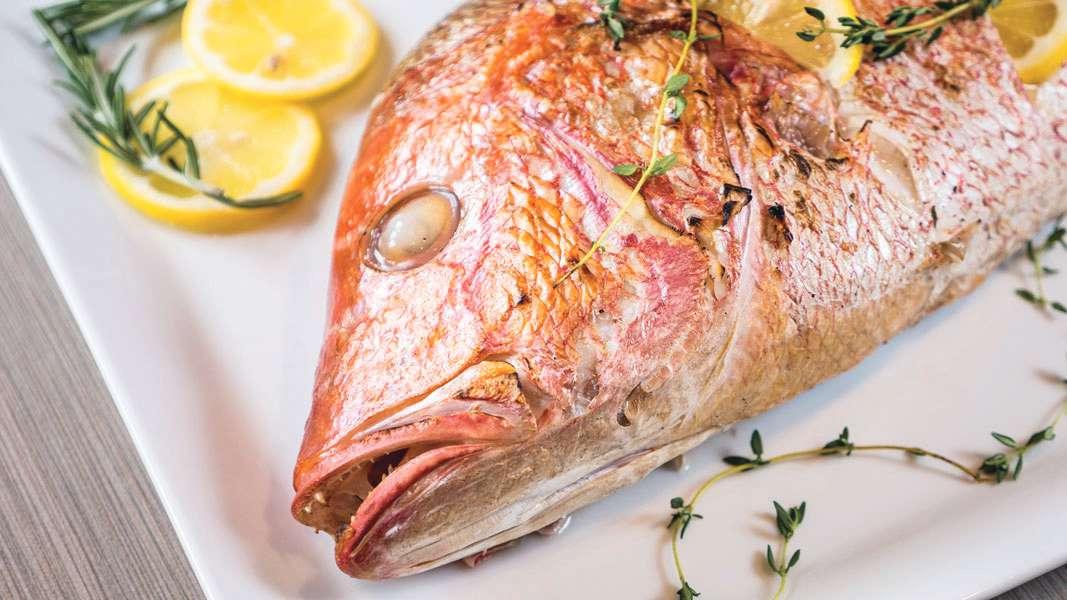
Snapper Gr ille with dipping sauce
Whole snapper, scaled and cleaned (one 3–5 lb. fish or two 1-1/2 lb. fish) Coconut oil, for brushing Salt and pepper Big handful of fresh herbs cilantro or basil 2 lemons/limes or 1 orange 3-in. section of fresh ginger, sliced thinly Additional lemon or lime wedges for the table
Sauce
1/2 t brown sugar 2 T coconut oil 2-3 garlic cloves, minced 1/2 to 1 fresh chili pepper, sliced thinly (depends on your heat preference) 1/2 cup soy sauce 2 t fish sauce
Preparation
Pre-heat your outdoor grill. Clean the fish inside and out, and pat very dry. Cut 3 to 4 vertical slashes to the bone on each side of the fish. Brush the fish inside and out with coconut oil. Season the fish with salt and pepper inside and out. Stuff with the fresh herbs, citrus slices and ginger slices, both inside the fish and tuck them inside the slashes. Place the fish inside a fish grill basket and close the basket. Grill for 6–8 minutes on direct heat (covered) then flip the basket and grill another 6–8 minutes (covered). The fish is done when it flakes easily at the thickest part of the fish.
To make the dipping sauce, heat a small sauce pot over medium-high heat. Add the cooking oil, and when hot, add the garlic and the chili peppers. Cook for 30 seconds. Add the soy sauce, fish sauce and sugar and let cook for another 15 seconds. Serve the sauce with lemon/lime wedges with the fish.

Whole steamed snapper with spr ing onion
1 lb. whole snapper fish 4 T light soy sauce 4 T coconut oil (or grapeseed) white pepper (fresh) 1 bunch spring onions (thinly sliced)
Preparation
Set up a wok or a pot wide enough to use as a steamer. You’ll need a trivet or a rack to put the fish dish onto, something to keep the dish off the bottom of the pot and the water. Put some water into the pot, cover with a lid and bring to a boil over a high heat. If you choose to serve this dish with rice, now is a good time to start cooking that as well.
Make two diagonal slits onto both sides of the fish. Place the fish into a shallow, heatproof dish that will fit into the steamer. Pour the soy sauce, oil and ginger over the fish, rubbing it onto both sides and into the belly. Sprinkle the white pepper over the fish.
Put the dish into the steamer that’s already come to a boil. Cover and turn the heat down to medium. You want a medium rolling simmer of steam as opposed to a furious boil. Steam for 10 to 12 minutes. Resist lifting the lid before the first 10 minutes. The flesh should be white and easily come away from the bone. Be careful not to overcook the fish though. After 10 minutes time, sprinkle the spring onions over the fish, cover and steam another minute just to soften the spring onions. Present whole and serve with rice.



